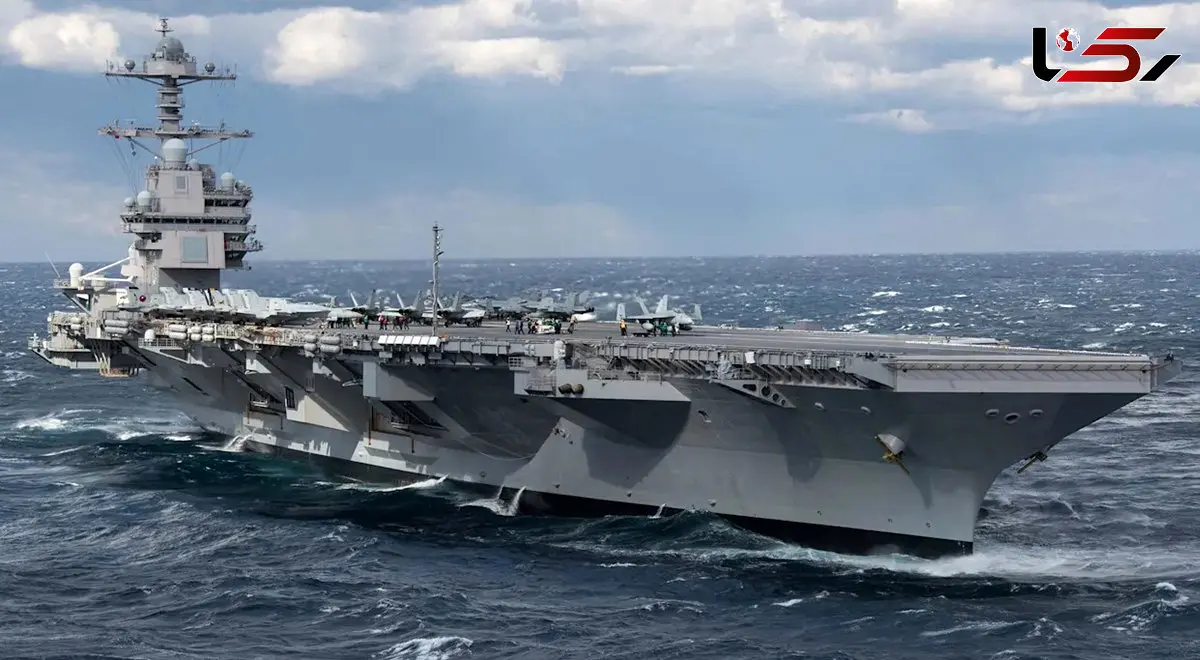Pentagon’s Largest Warship Enters Latin American Waters Amid Rising US-Venezuela Tensions
Rokna Political Desk: The USS Gerald R Ford, the world’s largest and newest aircraft carrier, has entered Latin American waters, marking the most significant US military presence in the region since the 1989 Panama invasion, as tensions rise between Washington and Venezuela.

According to Rokna, citing The Guardian, the arrival of USS Gerald R Ford marks the largest US military presence in the region since the 1989 Panama invasion.
The US Navy has confirmed that USS Gerald R Ford, the world’s newest and largest aircraft carrier, has entered the area of responsibility of the US Southern Command, which oversees Latin America and the Caribbean.
The deployment of the carrier and its accompanying strike group – which includes numerous aircraft and destroyers – was announced nearly three weeks ago, and its presence signals an escalation in military tensions between the US and Venezuela.
Meanwhile, Venezuelan President Nicolás Maduro’s regime declared what it described as a “massive deployment” of land, sea, air, river, and missile forces, along with civilian militias, to counter the US naval presence near its coast.
The US carrier joins other warships, a nuclear-powered submarine, and aircraft based in Puerto Rico, creating the largest US military presence in the region in decades – reportedly the most significant since the Panama invasion in 1989.
Donald Trump has defended the extensive military buildup as part of his “war on drugs,” aimed at targeting traffickers allegedly moving narcotics through Caribbean and Pacific waters. The campaign has included airstrikes on vessels that have killed at least 76 people in South American waters since September.
Sean Parnell, chief Pentagon spokesperson, said in a statement released by the US Navy that the arrival of USS Gerald R Ford, carrying “more than 4,000 sailors and dozens of tactical aircraft,” will “enhance US capacity to detect, monitor, and disrupt illicit actors and activities” in the region.
“These forces will strengthen and expand existing capabilities to combat drug trafficking and dismantle transnational criminal organizations,” he added.
Many analysts view the boat attacks and the growing US military presence as a strategy to pressure Maduro into stepping down following last year’s contested election.
Maduro accused the US of “manufacturing a new war” and described the naval deployment as “the greatest threat our continent has faced in the last 100 years.”
On Tuesday, prior to the US Navy’s confirmation of the carrier’s arrival, the Venezuelan government announced a new stage of military deployment against what it termed US “imperial threats,” with state television broadcasting footage of military officials giving speeches across several states.
On Sunday, during the closing of the Community of Latin American and Caribbean States (CELAC) summit in Colombia, a joint declaration signed by 58 of the 60 participating nations rejected “the use or threat of use of force and any action not in accordance with international law and the Charter of the United Nations,” without explicitly mentioning the US.
Venezuela and Nicaragua were the only countries that did not sign the declaration, though Maduro’s government reportedly expected a stronger condemnation of US actions.
Brazilian President Luiz Inácio Lula da Silva, negotiating a deal with Trump to reduce tariffs on Brazilian imports by more than 50%, also avoided directly referencing Washington. He said: “We are a zone of peace. War is not needed here. The issue in Venezuela is political and must be resolved politically.”
Send Comments